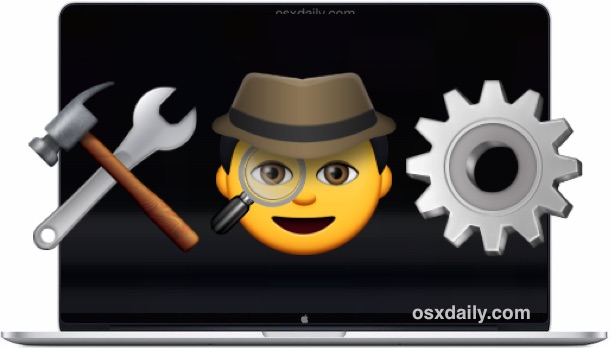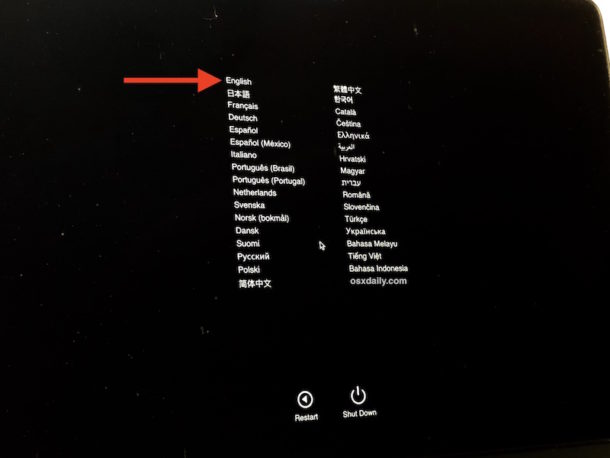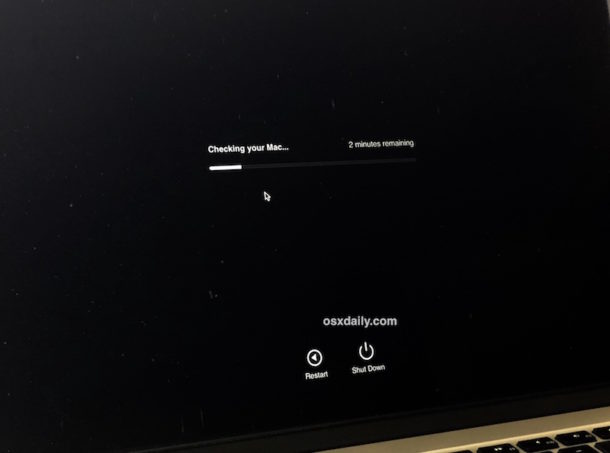How to Use Apple Diagnostics on Mac to Identify & Troubleshoot Hardware Problems

If your Mac is experiencing unusual problems that you suspect may be a result of a hardware issue, using Apple Diagnostics may help to identify and even troubleshoot a problem.
Apple Diagnostics will run a suite of tests on the Mac to check for hardware issues – meaning, not a problem with system software, but instead it searches for trouble with some sort of hardware component on the Macintosh. For example, if a port is no longer working, a battery has failed, an issue with the graphics card or display, things of that nature that are not related to system software or software related trouble.
Apple Diagnostics is basically the modern incarnation of Apple Hardware Test. Newer Macs will run Apple Diagnostics, whereas older Macs from 2013 and before will run the Apple Hardware Test suite instead. AHT typically displays a bit more information to the end user, while AD is a bit more restrained. Nonetheless, both are initiated the same way, and both are excellent for troubleshooting potential hardware issues on a Mac, regardless of whether it’s an old or new model.
Entering into Apple Diagnostics on a Mac is fairly simple, requiring a keypress on system boot. Here’s what you should do to accurately run the test on a Mac:
How to Run Apple Diagnostics on Mac to Test for Hardware Issues
- Disconnect all devices and cables connected to the Mac that are not required for it to function (i.e.; keyboard, mouse, external display, power cable)
- Shut down the Mac by going to the Apple menu and choosing “Shut Down”
- Turn on the Mac by pressing the Power button, then immediately press and hold the “D” key on the keyboard
- Continue holding the “D” key until you see a screen asking you to select your language, then click on your language choice to proceed
- Apple Diagnostics will run a series of hardware tests on the Mac, displaying a progress bar on the screen with an estimated time remaining and a “Checking your Mac…” message, this usually takes a few minutes to complete
- When finished, the Mac will report any issues that are found and show a reference code* if applicable
- You can run the Apple Diagnostic test again by clicking “Run the test again” if desired, otherwise you can choose the “Get Started” support option, “Restart” option, or “Shut Down” option



There are many potential error messages that may show up in Apple Diagnostics, and if you’re not sure what to make of them you can check them with the Apple diagnostic code list discussed further below, or contact Apple directly for support options.
Keep in mind that not every single hardware issue is going to show up or be flagged by Apple Diagnostics. Some more unusual hardware problems may not be discovered by the Apple Diagnostic tool included on Mac, and would need to have additional troubleshooting and discovery tests run by an authorized Apple technician. This can include unusual behavior like a computer that won’t start randomly, or a Mac that randomly shuts down, or some problems with ports or the internal display. Also, any physical damage to the Mac will not show up in Apple Diagnostics, so if your Mac has a big dent in the size or a cracked screen, that will not show up in the hardware test. Neither will something like drying a Mac after the Mac has sustained water or liquid contact, unless the water contact actually damaged something that is then detectable in the diagnostic test. For this reason, the Apple Diagnostic test is not perfect, but it’s a great starting point for end consumers to begin troubleshooting some particularly annoying hardware problems on a Mac, iMac, MacBook, MacBook Pro, or other modern Macintosh computer.
Running Apple Diagnostics on a Mac via the Internet
You can also run Apple Diagnostics test over the internet by holding down Option + D during system start. This takes a little longer to load, but the hardware diagnostic test otherwise works the same.
How do I interpret Apple Diagnostics references codes from a Mac?
If Apple Diagnostics reports a potential issue, it will provide a reference diagnostic code and a brief explanation of what the issue pertains to. You can then get further information by making note of the Apple Diagnostics reference code number and checking the Apple Reference Codes page here for additional information. This is a helpful resource and should assist you in troubleshooting a hardware problem.
Going Further with Apple Diagnostics and Troubleshooting Mac Hardware
Remember, the Apple Diagnostics tool is helpful, but it is not definitive. If you are experiencing problems on a Mac that seem to be clearly related to a hardware problem, you will probably want to do the following:
- Run the aforementioned Apple Diagnostics test, repeat the test a few times if desired and/or to be thorough
- Backup the Mac with Time Machine
- Perform an SMC reset
- Perform an PRAM / NVRAM reset
- If the problem persists, contact Apple Support or an official Apple authorized repair center for further assistance
The good news is that hardware problems are rare, and most hardware problems are fixable. In fact, many hardware issues will be covered by the Apple warranty or Applecare Extended Warranty, meaning a repair would be free of charge, as long as the problem is not not from damage or user-caused behavior.


how to lock folders on iPhone 6
“1.Disconnect all devices and cables connected to the Mac that are not required for it to function (i.e.; keyboard, mouse, external display, power cable)
?????
That makes it a little difficult to proceed to steps 2-7
Perhaps the author has the thought control version of OSX…
:0)
@Mikex69 This hint was not about fear, it was about educating readers to deal with potential problems. I, for one, am grateful for the info.
What do you get by putting fear into OSX users?! Waiting for fear?! NO!